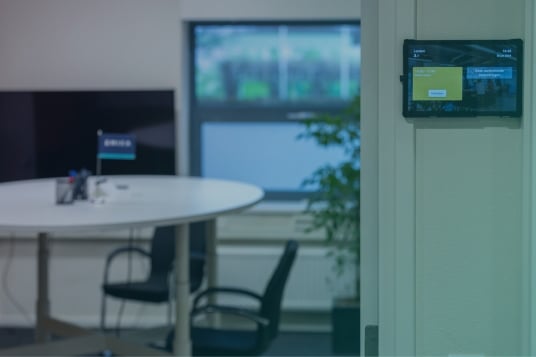Virtual Fitting Rooms vs. Traditional In-Store Fitting Rooms: Navigating the Future of Retail
Last edited on Jul, 01 2025 10:49:21 AM
Reading time: 3 minutes
Written by Hessel Snijder
Table of contents

The retail landscape is undergoing a digital transformation, with technologies like virtual fitting rooms (VFRs) promising to revolutionize the shopping experience. By allowing customers to "try on" clothes virtually, retailers aim to enhance convenience and reduce return rates. However, despite the potential, VFRs have yet to achieve widespread adoption. In contrast, traditional in-store fitting rooms remain a staple in brick-and-mortar retail. This blog explores the pros and cons of both approaches, helping retailers understand which solution best fits their business model.
What is a Virtual Fitting Room?
A Virtual Fitting Room (VFR) is a digital solution that uses technologies like augmented reality (AR) and 3D modeling to simulate the experience of trying on clothes online. Customers can input their measurements or use their device's camera to see how garments might look on them without physically wearing the items
Pros of Virtual Fitting Rooms
- Enhanced Online Shopping Experience: VFRs provide a more interactive and personalized online shopping experience, potentially increasing customer engagement.
- Reduced Return Rates: By giving customers a better idea of fit and appearance, VFRs can help reduce the number of returns due to sizing issues.
- Data Collection: Retailers can gather valuable data on customer preferences and behaviors, aiding in inventory and marketing strategies.
- Cost Savings: Over time, VFRs can reduce costs associated with returns and in-store staffing.
Cons of Virtual Fitting Rooms
- Technical Limitations: Current technology may not accurately capture the fit, fabric drape, or color nuances, leading to customer dissatisfaction.
- Privacy Concerns: Collecting body measurements and images raises privacy and data security issues.
- High Implementation Costs: Developing and integrating VFR technology can be expensive, especially for smaller retailers.
- Limited Adoption: As noted in Emixa's blog, despite the potential, VFRs haven't seen widespread adoption due to these challenges.
What is a Traditional In-Store Fitting Room?
Traditional in-store fitting rooms are physical spaces within retail stores where customers can try on clothing before making a purchase.
Pros of Traditional Fitting Rooms
- Tangible Experience: Customers can feel the fabric, assess the fit, and see the actual color, leading to more confident purchasing decisions.
- Immediate Feedback: Shoppers can instantly decide whether an item suits them, reducing the likelihood of returns.
- Personal Interaction: Sales associates can provide assistance, recommendations, and upselling opportunities.
Cons of Traditional Fitting Rooms
- Limited Convenience: Customers must visit the store physically, which may not be feasible or convenient for everyone.
- Operational Costs: Maintaining fitting rooms requires space, staffing, and upkeep, contributing to overhead costs.
- Health and Safety Concerns: In the wake of health crises, some customers may be hesitant to use shared fitting spaces.

Virtual vs Traditional: A Comparative Analysis
|
Feature |
Virtual Fitting Rooms |
Traditional In-Store Fitting Rooms |
|
Convenience |
High – Accessible from anywhere |
Low – Requires physical store visit |
|
Accuracy of Fit |
Moderate – Dependent on technology |
High – Actual garment tried on |
|
Customer Engagement |
High – Interactive and tech-driven |
Moderate – Relies on in-person interaction |
|
Implementation Cost |
High – Technology development and integration |
High – Physical space and staffing |
|
Return Rate Impact |
Potentially lower with accurate tech |
Generally lower due to physical try-on |
|
Privacy Concerns |
High – Data collection involved |
Low – Minimal personal data collected |
|
Scalability |
High – Easily integrated into online platforms |
Low – Limited by physical store capacity |
Conclusion
Both virtual and traditional fitting rooms offer unique advantages and face distinct challenges. Virtual fitting rooms align with the digital transformation of retail, offering convenience and innovative customer experiences. However, technical limitations and privacy concerns hinder their widespread adoption. Traditional fitting rooms provide a reliable and tactile shopping experience but lack the convenience and scalability of digital solutions.
Retailers should consider a hybrid approach, integrating virtual fitting technologies to complement physical stores, thereby catering to a broader range of customer preferences and enhancing the overall shopping experience.
Last edited on Jul, 01 2025 10:49:21 AM
Reading time: 3 minutes
Written by Hessel Snijder
Also see..
OverviewEfficient Meeting Room Reservation with Emixa Room Tablet Application
Reserving a meeting room has never been easier.
Read more ⟶Mastering Online Retrospectives: Five Essential Tips
We already wrote about how to deal with the 3 most common challenges for a scrum master working...
Read more ⟶What is the Connection Between Product Returns and Customer Retention?
In a competitive market, customer loyalty is no longer earned by product quality alone—it’s about...
Read more ⟶

